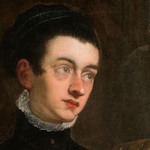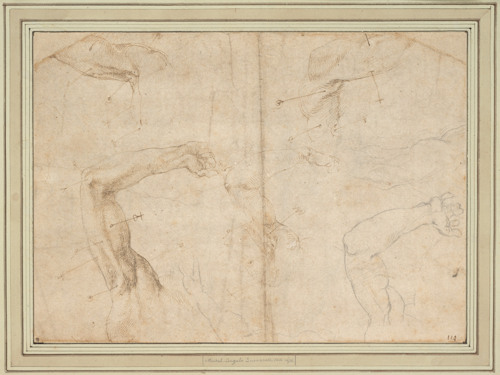
Imagine tales of artists at the height of their powers. Tales of intrigue, jealousy, tragedy, but also respect. Tales that take place in momentous periods of European art history. And all illustrated by paintings and sculptures ranked among the best of their era. That’s the Idols & Rivals exhibition at the Kunsthistorisches Museum.
- Takes us on an anecdote-filled journey through various forms of competition and collaboration
- Showcases artists who competed both literally and figuratively
- Paintings and sculptures by Michelangelo, Rubens, Titian, van Dyck, and many more iconic figures
- Includes some 60 masterpieces loaned from international collections
- Runs Sept 20, 2022 – Jan 8, 2023
- See also:
- KHM overview & visitor tips
- Current art exhibitions in Vienna
Artists in competition

(Jacques-Louis David; The Fight between Mars and Minerva; 1771; Canvas, 1.14 × 1.468 m; Musée du Louvre, Paris © bpk / RMN – Grand Palais / Philippe Fuzeau)
The Kunsthistorisches Museum has a tradition of major exhibitions across autumn and early winter. Past examples include, for example, the legendary Bruegel exhibition of 2018/2019.
Idols & Rivals slips neatly into the pattern by featuring the work of notable names from European art history. Think Michelangelo, Titian, Fontana, Rubens, van Dyck, Cellini, Tintoretto, Giambologna, and others.
The key is in the context, though.
We might assume your typical artist lost in their own world as they create masterpieces for sponsors or tease images up from the depths of their fiery imagination.
Yet competition and comparison have traditionally played an important role in driving painters and sculptures to ever greater heights.
Which brings us to the Idols & Rivals theme.
The exhibition describes some of the historical confrontations that helped lead to many of the greatest works of the classical world or Baroque and Renaissance eras. And it displays those same works, too.

(Giambologna after an original by Michelangelo; Notte (night); before 1574; Alabaster, 44.5 × 46.5 × 18.8 cm; Staatliche Kunstsammlungen Dresden © Skulpturensammlung, Staatliche Kunstsammlungen Dresden; photo: Elke Estel/Hans-Peter Klut)
In doing so, Idols & Rivals presents a series of themes related to competition in its broadest sense: from formal competitions among Greek sculptors of the Antiquity to artistic rivalries of the Renaissance that sometimes had tragic endings.
From competition for commissions to attempts to emulate the great masters of the past.
From debates over the value of different artistic mediums to academic awards.
Each theme features anecdotes illustrated with original art that relates to the tales. So personalities and iconic moments of the past come to life.
This story-based approach ensures accessibility alongside great works: a concept that engages everyone from the casual visitor to the die-hard art expert. So a tip of the hat to the curator, Gudrun Swoboda.
And what works we get to see! What stories are told!
We can enjoy, for example, an early 5th-century BCE vase by Euthymides inscribed with a dig at his rival Euphronius. Talent is no protection from petty behaviour.
We learn of Michelangelo and Leonardo da Vinci vying with each other over the excellence of a battle scene fresco, with copies of their cartoons and one of Michelangelo’s preliminary studies alongside.

(Michelangelo Buonarroti, called Michelangelo (1475–1564); Studies of a raised arm c.1504; Pen and brown ink, black chalk; 226 × 315 mm © ALBERTINA, Vienna)
We hear of Titian’s likely jealousy of Tintoretto’s ability and can judge their talents for ourselves through portraits by both of sitters from the same family.
Or we decide whether a teacher or student did a better job of an early 17th-century painting of St. Ambrose and Emperor Theodosius. The teacher being Rubens, the student van Dyck.
And we really do decide: several comparisons allow you to use a barcode on your ticket to vote for your favourite. The results appear at the end of the exhibition.
(No spoilers, but it wasn’t looking good for van Dyck at the exhibition preview.)
We even drift into more benign territory to see, for example, how Rubens himself copied Titian as a form of honouring the master. Or see paintings or decorated clocks created through artistic collaborations and with varying degrees of success.
In collating the array of masterpieces, the Kunsthistorisches Museum draws on its own collections, but also loans from such prestigious institutions as the Louvre, the Rijksmuseum, the Uffizi, London’s V&A museum, and even the Vatican museums.
As such, some works have never appeared in Austria before. And others come together for the first time since their original creation in centuries past.
Tickets, dates & tips
Enjoy the artistic comparisons between September 20th, 2022 and January 8th, 2023. Look for the Idols & Rivals booklet you can borrow at the exhibition start. It has all wall text and item labels in English for you.
The major exhibitions like Idols & Rivals require a museum entrance ticket but also an extra time slot ticket specifically for the exhibition itself: available on site or online in advance direct from the museum.
(In advance might make sense if time slots fill up. A lot depends on how many visitors come to Vienna for the holiday season.)
Needless to say, once inside you also have access to the permanent displays in the picture galleries. These feature hundreds of paintings from the same (or similar) eras as those in the Idols & Rivals exhibition.
The Kunsthistorisches Museum is not the only place to roll out the top names for the end of 2022, either.
Look, for example, for the Albertina’s Basquiat exhibition or the Bank Austria Kunstforum Wien’s Helmut Newton retrospective (from October 19th).
Incidentally, the museum opens late on Thursdays, so consider combining Idols & Rivals with an evening mug of something hot at the Christmas market on the square outside.
How to get there
Follow the travel tips on the main Kunsthistorisches Museum page. The museum is central enough to be on my suggested walking tour of Vienna.
Address: Burgring 7, 1010 Vienna